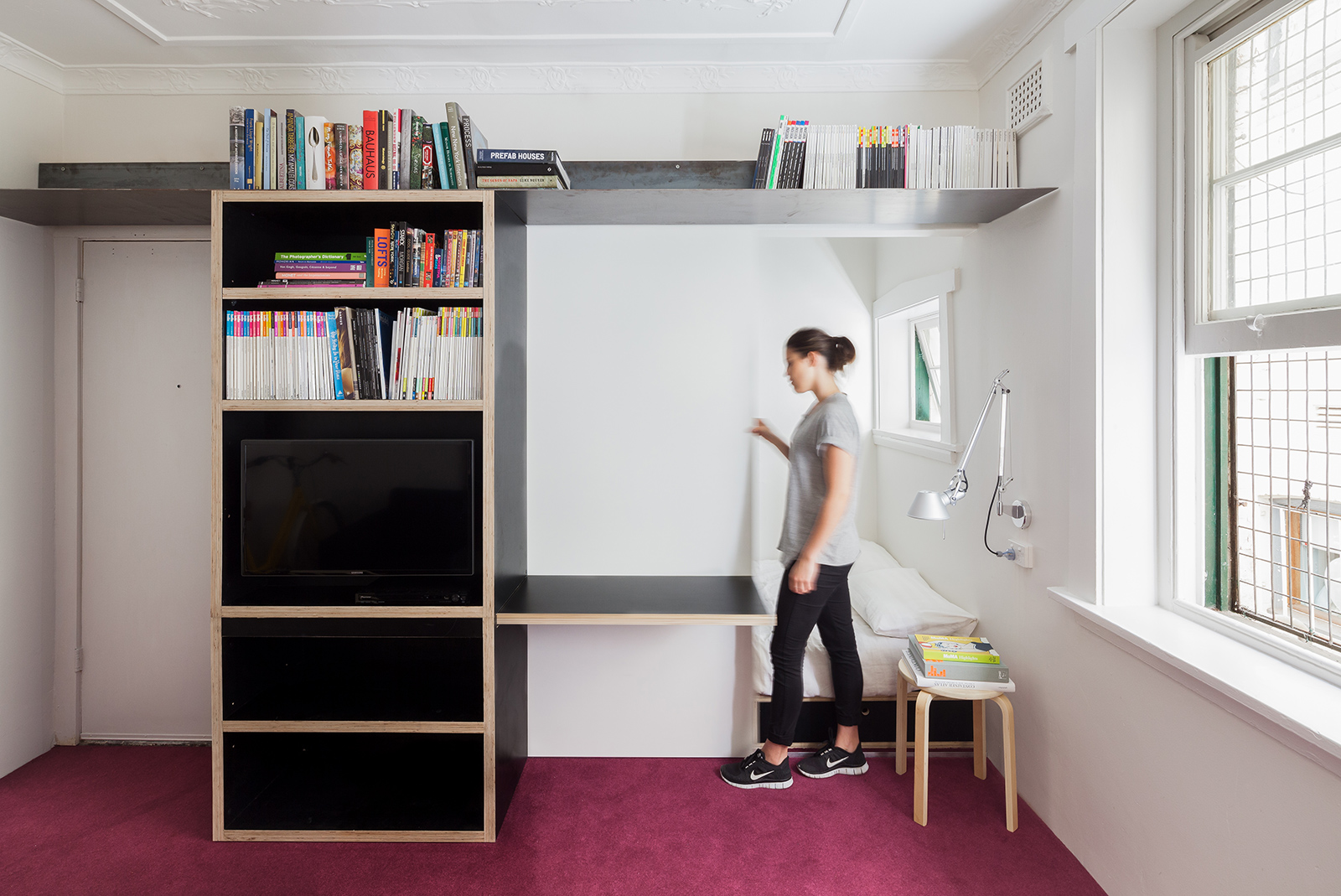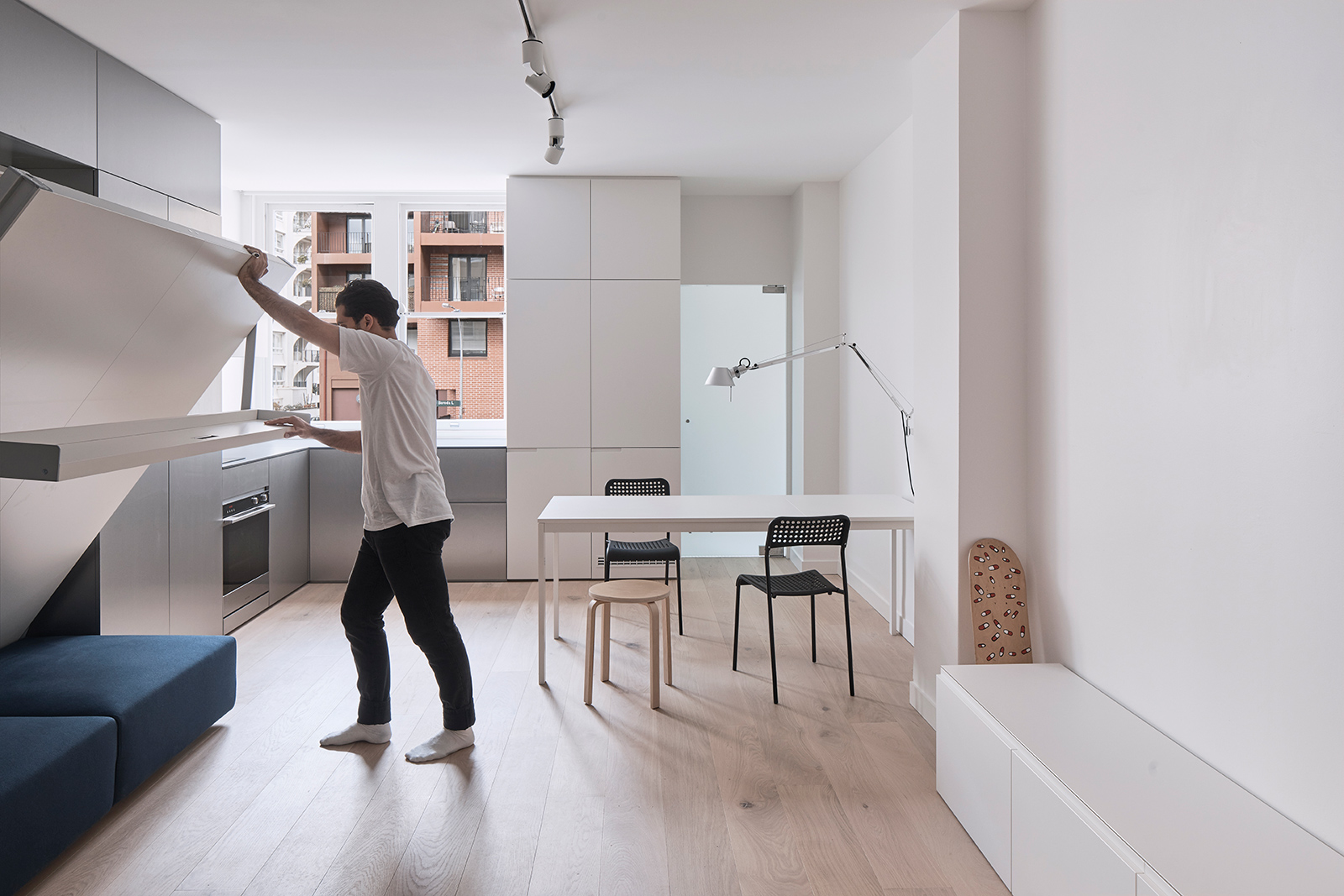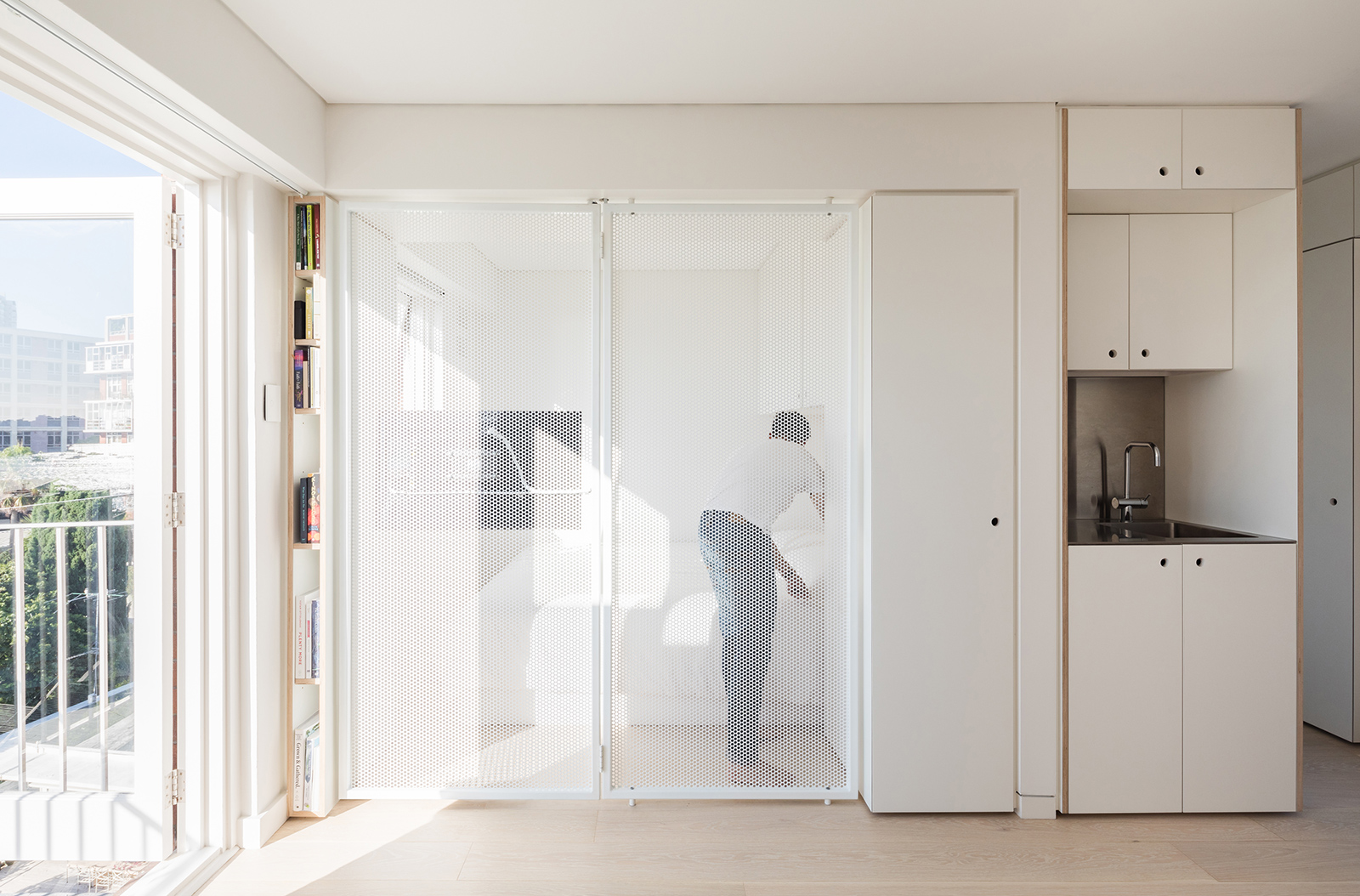Designer Spotlight: Nicholas Gurney on Beautility in Interior Design
“Living in a small space requires an adjustment towards a new, leaner way of occupancy where pre-ordained and conventional thinking is prohibitive,” says Nicholas Gurney, an Australian interior designer with a background in industrial design. His designs have garnered attention due to his creative use of modular cabinetry to transform the utility and flow of small spaces.
“Beautility” for Gurney is “a combination of beauty and utility” that coheres with “the application of reductivism in the home.”
Implementing this tight-knit minimalism requires careful planning, and Gurney’s process, which relies heavily on a similarly precise back and forth with a client, starts with contemplation. “I like to go for walks that often turn into very long walks. I find clarity in this process. There is no pen to paper or hand to mouse until I’ve conceived ideas strictly in my mind,” he says.

Formally, Gurney’s designs are streamlined.
His words bring to mind the thoughtful stroll of an artist, letting inspiration come. In this process of contemplation, beauty transforms method.
Formally, Gurney’s designs are streamlined. He takes advantage of planar surfaces to direct light and movement in unusual ways. Central to this is his custom-made modular cabinetry, which serves multiple functions at once. The cabinets work to compartmentalize open spaces, and they can function as negative or positive space in the form of pull-out beds, intended entertainment areas, or more traditional hinged-storage areas.
“I firmly believe there is something satisfying about inhabiting spaces that are considered, functional, and conceived without surplus or excess,” he says, noting that these ideals will play an increasingly important part in the way that we conceptualize cities in the future.

He takes advantage of planar surfaces to direct light and movement in unusual ways.
In many ways, his designs recall the fantasies of Asimov or Clarke: clean surfaces meant to maximize space and, that often, reflect natural light. That these creations recall space stations and shuttles makes sense when taking into account his design considerations, which are primarily “storage, privacy, utility, expenditure, and aesthetics.”
The aesthetics of the future are closer than they seem, as are the realities of social and climate collapse due to the unsustainable way that cities function. “The inherent principles of compact living counter these trends,” he says.
In this spirit, rethinking space through a marriage of utility and beauty rings with a certain poetry and defiance. More than just treating design as purely aesthetic or playing into gratuitous ideas of functionality, designers like Gurney are edging toward a specific and forward-looking value. Like a painting, the future starts in the mind, on gentle walks like Gurney’s through the disappearing greenery.
We just need to build it.

In this spirit, rethinking space through a marriage of utility and beauty rings with a certain poetry and defiance.
________
Never miss a story. Sign up for NUVO’s weekly newsletter here.




